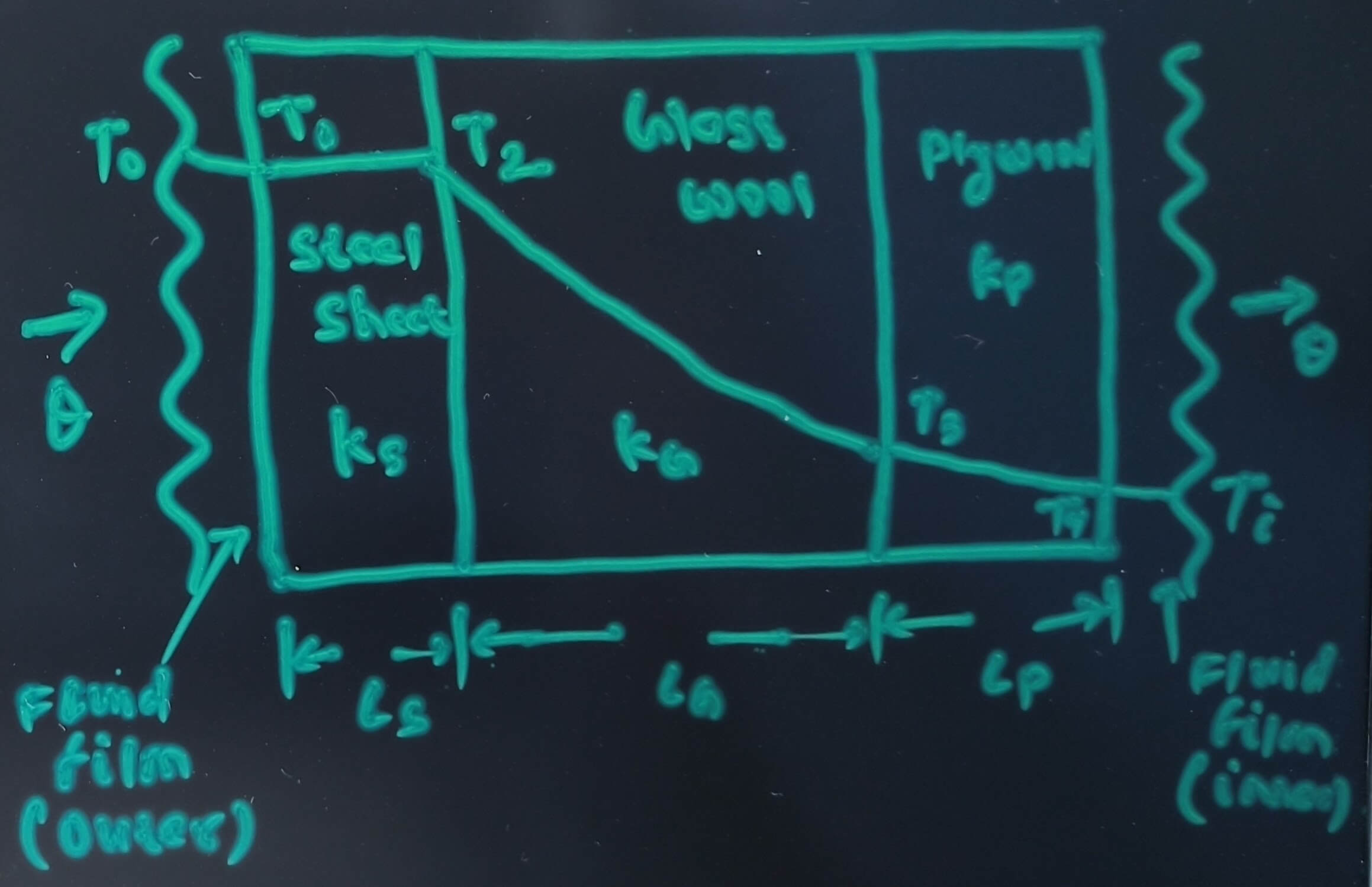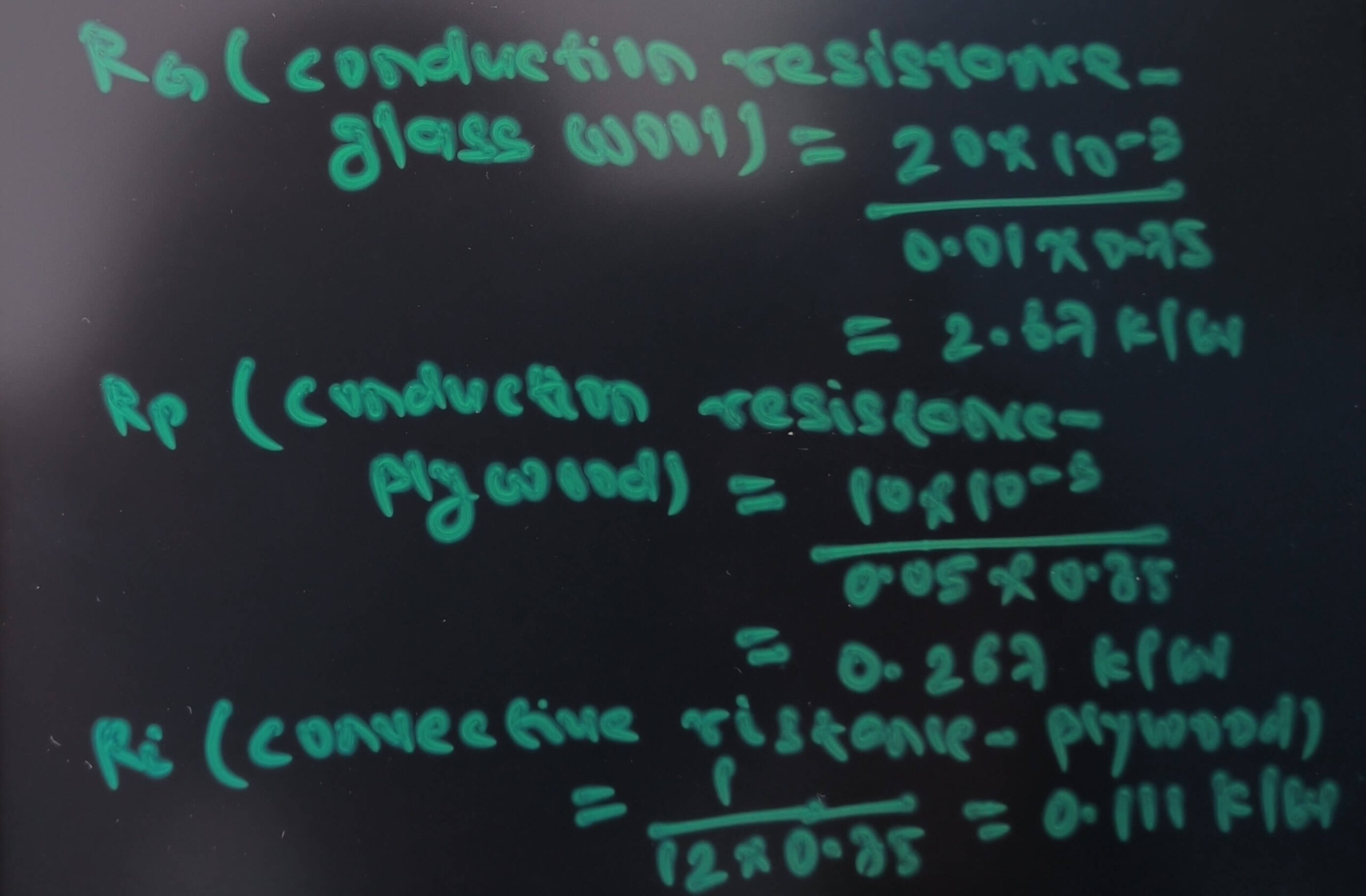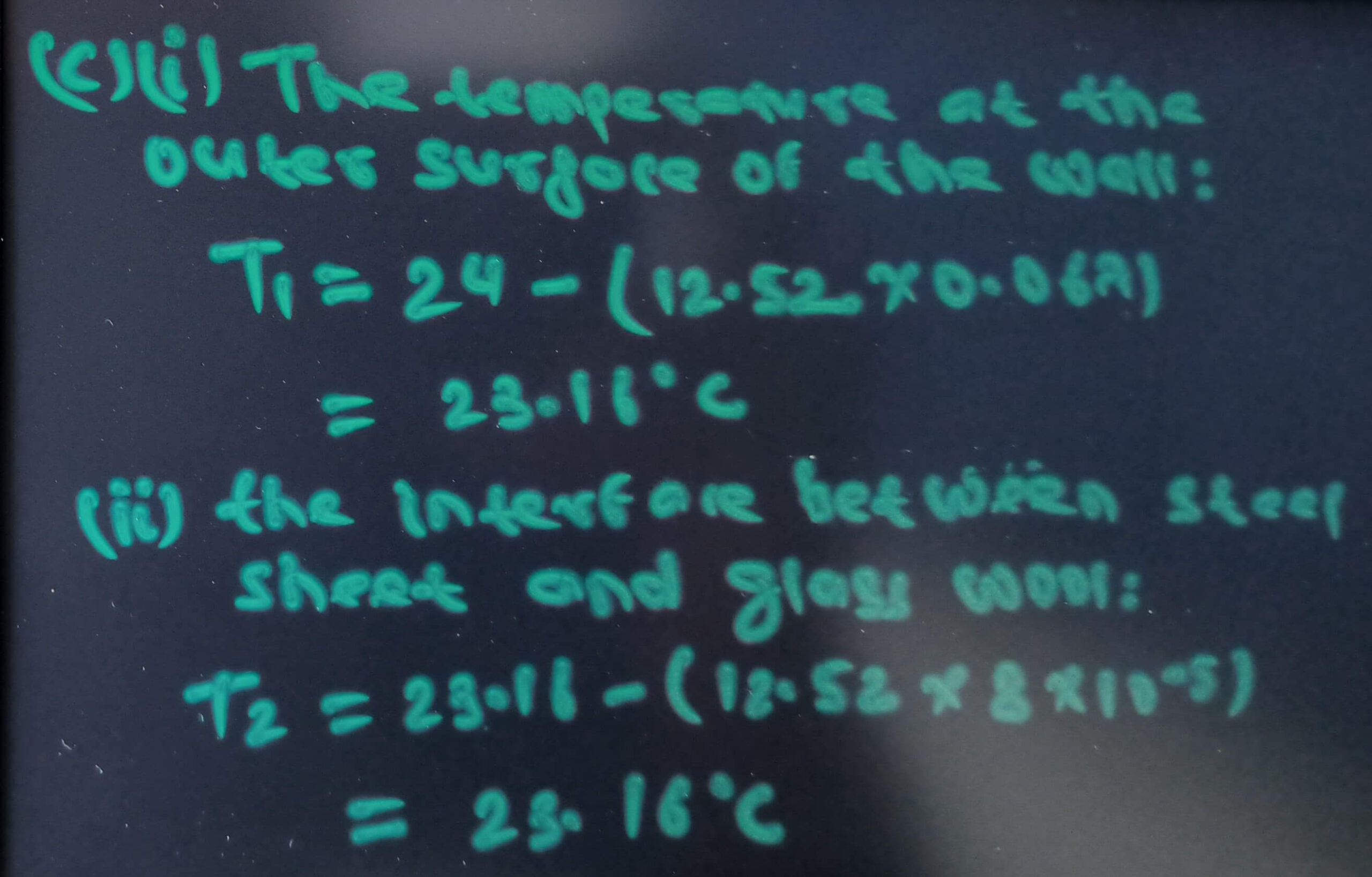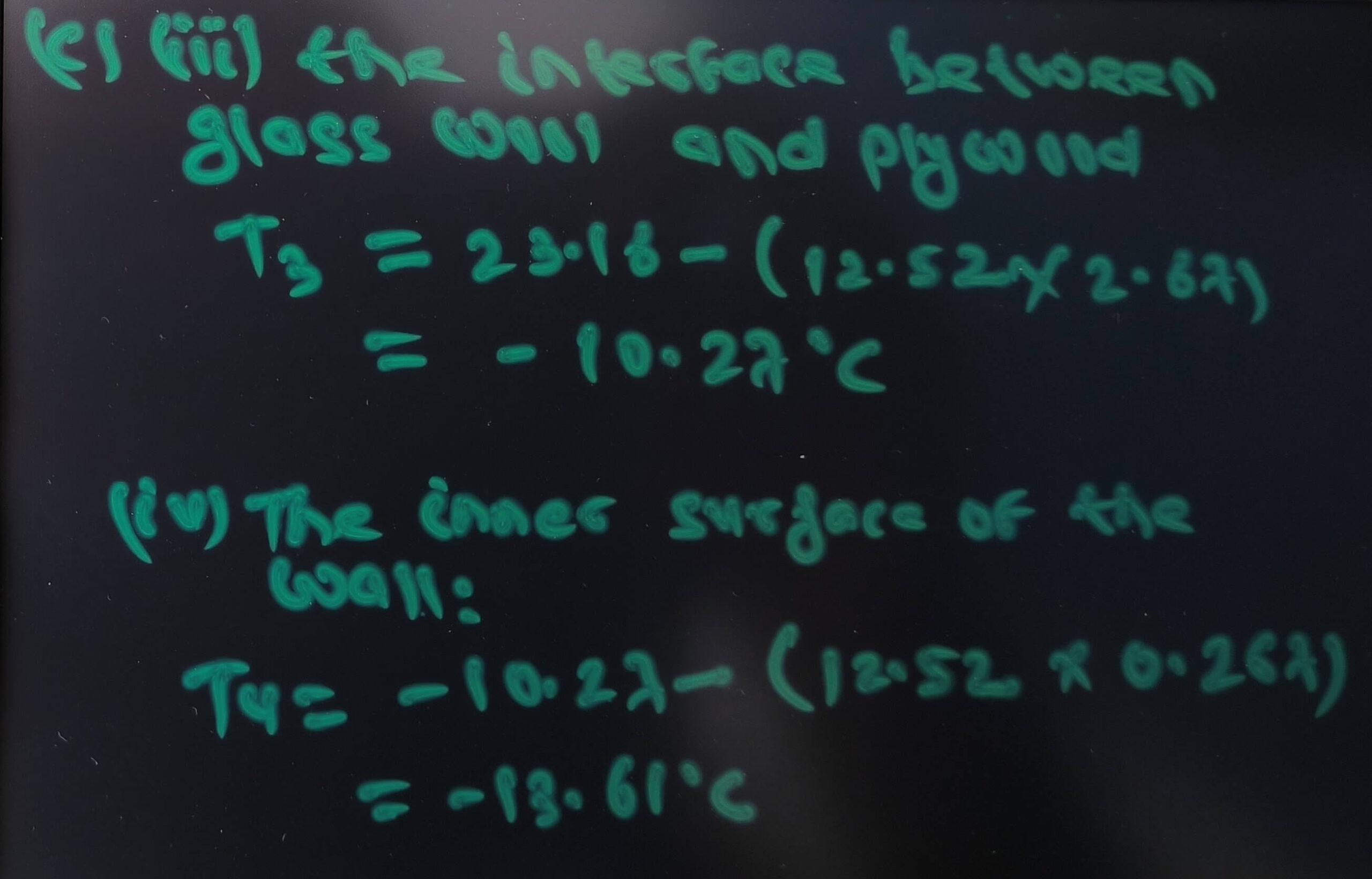A plane wall of a refrigerated van is made of 1.5mm steel sheet (k_s = 25W/(mK)) at the outer surface, 10 mm plywood (k_p = 0.05 W/(mK)) at the inner surface and 20 mm glass wool (k_G=0.01 W/(mK)) in between the outer and inner surfaces. Determine the individual components of the thermal resistance
A plane wall of a refrigerated van is made of 1.5mm steel sheet (k_s = 25W/(mK)) at the outer surface, 10 mm plywood (k_p = 0.05 W/(mK)) at the inner surface and 20 mm glass wool (k_G=0.01 W/(mK)) in between the outer and inner surfaces. The temperature of the cold environment inside the van is -15 degree Celsius, while the outer surface is exposed to a sourrounding ambient at 24 degree celsius. The average values of convective heat transfer coefficients at the inner and outer surfaces of the wall are 12W/(m2K) and 20 W/(m2/K) respectively. The surface area of the wall is 0.75 m2. Determine:
(a) The individual components of the thermal resistance to heat flow.
(b) The rate of heat flow through the wall.
(c) The temperature at (i) the outer surface of the wall, (ii) the interface between steel sheet and glass wool, (iii) the interface between glass wool and plywood, and (iv) the inner surface of the wal.









